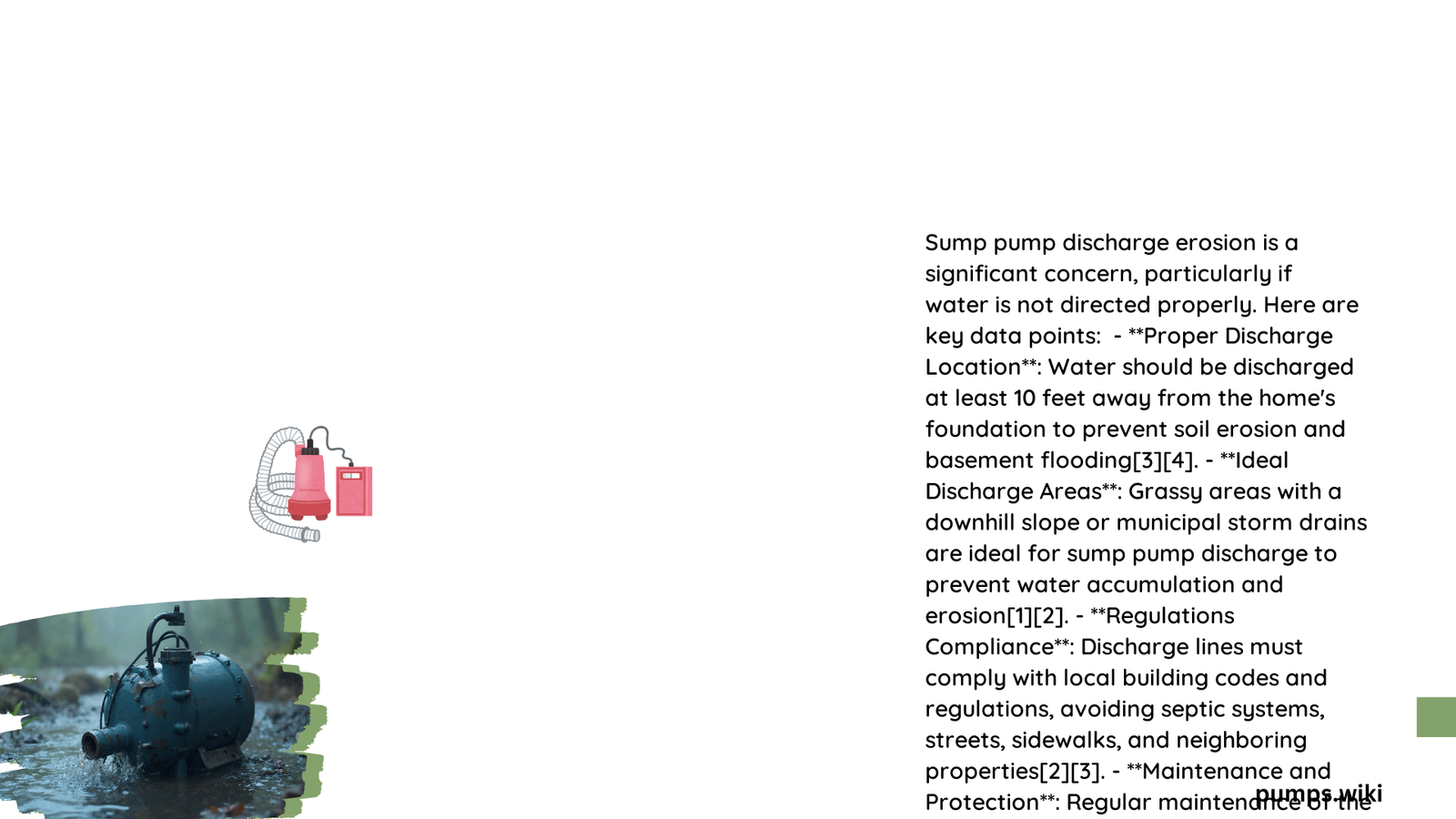Sump pump discharge erosion represents a critical challenge for homeowners, potentially causing significant landscape damage and foundation instability. Water expelled from sump pumps can rapidly degrade soil structures, creating channels that compromise drainage systems and landscape integrity. Understanding the complex interactions between water velocity, soil composition, and discharge techniques is essential for effective erosion prevention and long-term property protection.
What Causes Sump Pump Discharge Erosion?
How Do Soil Types Impact Erosion Rates?
Different soil compositions dramatically influence erosion potential:
| Soil Type | Erosion Susceptibility | Water Absorption Rate |
|---|---|---|
| Sandy Soil | High | Rapid |
| Clay Soil | Moderate | Slow |
| Loamy Soil | Low | Moderate |
Key Erosion Factors
- Water discharge velocity
- Soil particle size
- Slope of discharge area
- Volume of water expelled
What Determines Water Flow Velocity?
Water flow velocity directly correlates with erosion potential. Factors include:
– Pipe diameter
– Discharge angle
– Total water volume
– Landscape gradient
How Can Homeowners Prevent Discharge Erosion?

Discharge Line Placement Strategies
Effective prevention requires strategic planning:
- Distance from Foundation
- Minimum 10 feet recommended
- Ideal distance: 20-25 feet
-
Prevents water reabsorption
-
Slope Considerations
- Maintain downward gradient
- Ensure natural water flow
- Avoid pooling areas
What Materials Work Best for Discharge Lines?
Pipe Material Comparison
| Material | Durability | Lifespan | Cost |
|---|---|---|---|
| PVC | Good | 20-50 years | Low |
| HDPE | Excellent | 50+ years | Moderate |
| Copper | Excellent | 50+ years | High |
Landscape Management Techniques
Erosion Control Methods
- Install dry wells
- Create gravel-lined swales
- Use erosion control blankets
- Implement riprap at discharge points
What Maintenance Practices Reduce Erosion Risk?
Regular Inspection Protocols
- Test sump pump functionality weekly
- Check discharge line for blockages
- Inspect erosion-prone areas monthly
- Clear debris from discharge zone
Seasonal Maintenance Recommendations
- Winterize discharge lines
- Insulate pipes below frost line
- Check for ice dam formations
- Verify proper water dispersion
Advanced Prevention Strategies
Professional Assessment Techniques
- Soil composition analysis
- Water flow rate measurement
- Landscape gradient evaluation
- Custom drainage solution design
Technical Considerations
Calculating Optimal Discharge Parameters
- Measure pipe diameter
- Assess water volume
- Determine landscape gradient
- Design energy dissipation mechanisms
Recommended Equipment
- Flow control valves
- Flexible discharge extensions
- Erosion control fabrics
- Underground drainage systems
Cost-Effective Solutions
Budget-Friendly Erosion Prevention
- DIY drainage modifications
- Landscape contouring
- Gravel bed installations
- Strategic pipe repositioning
Potential Risks of Neglecting Erosion
Consequences of Improper Management
- Foundation structural damage
- Landscape degradation
- Water infiltration risks
- Potential property value reduction
Long-Term Mitigation Strategies
- Regular professional assessments
- Continuous system monitoring
- Proactive maintenance schedule
- Adaptive drainage solutions
Conclusion
Effective sump pump discharge erosion management requires a comprehensive, multi-faceted approach combining technical knowledge, strategic planning, and consistent maintenance.
